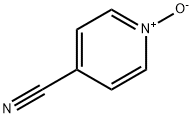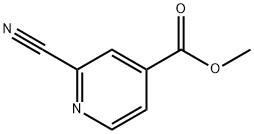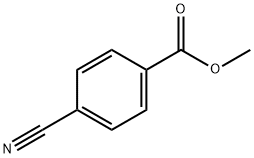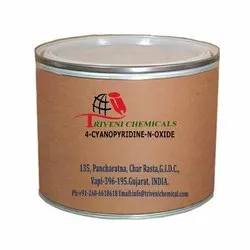4-Cyanopyridine N-oxide
Synonym(s):Isonicotinonitrile 1-oxide
- CAS NO.:14906-59-3
- Empirical Formula: C6H4N2O
- Molecular Weight: 120.11
- MDL number: MFCD00006205
- EINECS: 238-974-6
- SAFETY DATA SHEET (SDS)
- Update Date: 2025-09-12 18:45:48

What is 4-Cyanopyridine N-oxide?
Description
4-Cyanopyridine N-oxide is a heterocyclic compound and is an intermediate in the preparation of Topiostat. It is also used as a ligand for other metals or compounds for the formation of new dimeric complexes. It is commonly used in chemical materials research.
Chemical properties
Pale-Green Solid
The Uses of 4-Cyanopyridine N-oxide
Anti-bacterial agent
The Uses of 4-Cyanopyridine N-oxide
Anti-bacterial agent.
Synthesis
4-Cyanopyridine N-oxide was synthesised by the reaction of 4-cyanopyridine and 3-chloro-benzenecarboperoxoic acid in chloroform reflux.
Properties of 4-Cyanopyridine N-oxide
| Melting point: | 223-225 °C(lit.) |
| Boiling point: | 382.7±15.0 °C(Predicted) |
| Density | 1.14±0.1 g/cm3(Predicted) |
| storage temp. | Inert atmosphere,Room Temperature |
| solubility | 1 M NH4OH: soluble5mg/mL, clear, colorless (methanol) |
| pka | -0.86±0.10(Predicted) |
| form | Solid |
| color | White to Off-White |
| CAS DataBase Reference | 14906-59-3(CAS DataBase Reference) |
| NIST Chemistry Reference | 4-Pyridinecarbonitrile, 1-oxide(14906-59-3) |
| EPA Substance Registry System | 4-Pyridinecarbonitrile 1-oxide (14906-59-3) |
Safety information for 4-Cyanopyridine N-oxide
| Signal word | Warning |
| Pictogram(s) |
 Exclamation Mark Irritant GHS07 |
| GHS Hazard Statements |
H315:Skin corrosion/irritation H319:Serious eye damage/eye irritation H335:Specific target organ toxicity, single exposure;Respiratory tract irritation |
| Precautionary Statement Codes |
P261:Avoid breathing dust/fume/gas/mist/vapours/spray. P280:Wear protective gloves/protective clothing/eye protection/face protection. P301+P312:IF SWALLOWED: call a POISON CENTER or doctor/physician IF you feel unwell. P305+P351+P338:IF IN EYES: Rinse cautiously with water for several minutes. Remove contact lenses, if present and easy to do. Continuerinsing. |
Computed Descriptors for 4-Cyanopyridine N-oxide
| InChIKey | QNCSFBSIWVBTHE-UHFFFAOYSA-N |
New Products
Indole Methyl Resin tert-butyl 9-methoxy-3-azaspiro[5.5]undecane-3-carboxylate Boc-His(Boc)-OH 2-CTC Resin 4-Chloro-7-tosy1-7Hpyrrolo[2,3-d]pyrimidine 5,7-Dibromo-1H-indole 2,5-dichloro-N-hydroxy-4,6-dimethylpyridine-3-carboximidamide 2,2-Dimethoxy-7-azaspiro[3.5]nonane hydrochloride 4-chloromethyl-5-methyl-1,3-dioxol-2-one (DMDO-Cl) R-2-BENZYLOXY PROPIONIC ACID 1,1’-CARBONYLDIIMIDAZOLE 1,1’-CARBONYLDI (1,2-4 TRIAZOLE) N-METHYL INDAZOLE-3-CARBOXYLIC ACID 4-((2-hydroxyethyl)thio)benzoic acid 1-(TERT-BUTOXYCARBONYL)-2-PYRROLIDINONE Methyl 6-methylnicotinate 3-Pyridineacrylic acid tert-Butyl carbazate TETRAHYDRO-2H-PYRAN-3-OL 2-((4-morpholinophenylamino) (methylthio) methylene) malononitrile 3-(4-morpholinophenylamino)-5-amino-1H-pyrazole-4-carbonitrile 2,4-dihydroxybenzaldehyde 1,3-Diethyl-1,3-Diphenylurea Methyl 2-methylquinoline-6-carboxylateRelated products of tetrahydrofuran








You may like
-
 14906-59-3 4-CYANOPYRIDINE-N-OXIDE 99%View Details
14906-59-3 4-CYANOPYRIDINE-N-OXIDE 99%View Details
14906-59-3 -
 14906-59-3 4-Cyanopyridinium-1-olate 98%View Details
14906-59-3 4-Cyanopyridinium-1-olate 98%View Details
14906-59-3 -
 4-Cyanopyridine N-Oxide CAS 14906-59-3View Details
4-Cyanopyridine N-Oxide CAS 14906-59-3View Details
14906-59-3 -
 4-Cyanopyridine N-oxide CAS 14906-59-3View Details
4-Cyanopyridine N-oxide CAS 14906-59-3View Details
14906-59-3 -
 Powder 4-Cyanopyridine-N-Oxide, Packaging Type: DrumView Details
Powder 4-Cyanopyridine-N-Oxide, Packaging Type: DrumView Details
14906-59-3 -
 Pyridine 99.5% HPLC /UV SpectroscopyView Details
Pyridine 99.5% HPLC /UV SpectroscopyView Details
110-86-1 -
 Dibutyl PhthalateView Details
Dibutyl PhthalateView Details
84-74-2 -
 Thiourea 99% ARView Details
Thiourea 99% ARView Details
62-56-6
Statement: All products displayed on this website are only used for non medical purposes such as industrial applications or scientific research, and cannot be used for clinical diagnosis or treatment of humans or animals. They are not medicinal or edible.
